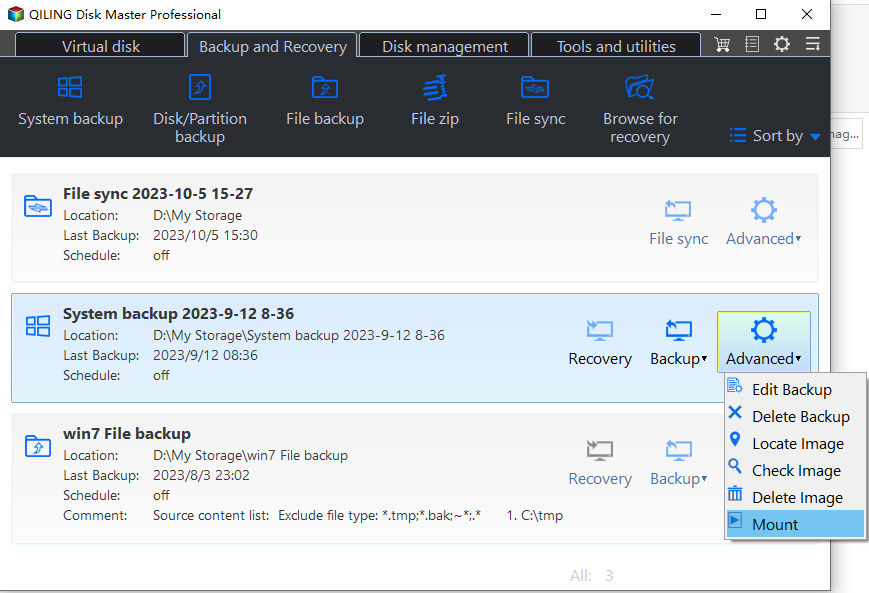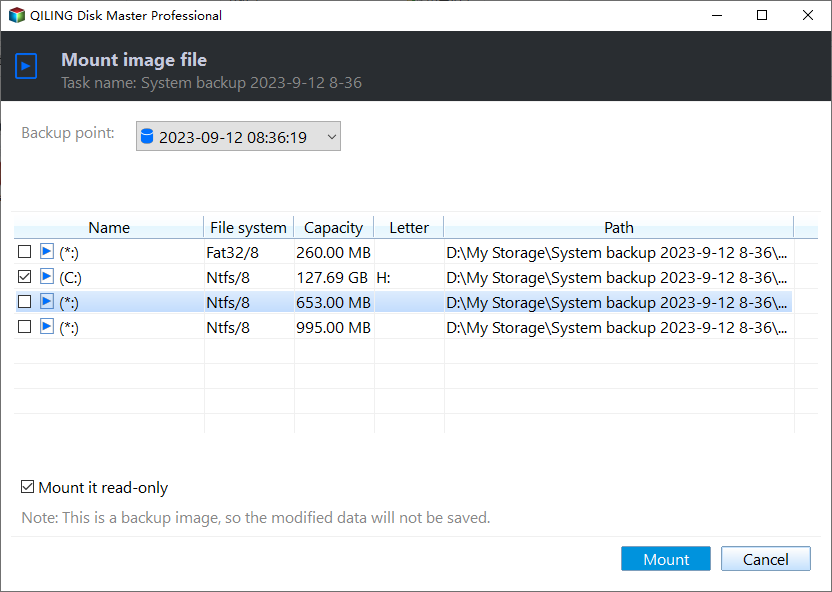How to Explore Image File in Windows 11, 10, 8, 7 [5 Steps]
In Need of Image File Explore
All data will be backed up to an image file when you backup a disk, partition or volume. When you want to check or use one of these backed up files, a normal way is to restore the backup image file to its original or new place. That is helpful, yet sometimes it becomes tedious.
For example, you backup entire system drive to an external drive on a regular basis. When you need a previous version of a particular file that created on your desktop, you need to restore the entire system drive. To my knowledge, that is not a good way for most users. Is there any easy way to explore only that specific file in Windows?
Best Tool to Explore Windows Image Backup File
Fortunately, the Explore Image feature in Qiling Disk Master provides a pretty easy way to complete the task. In detail, it will guide you mount the image file to a virtual drive. And then, the drive you mounted can be visited in Windows File Explorer like My Computer or This PC. Finally, all files on that virtual drive(s) can be moved to other places.
Qiling Disk Master Professional will help you go through said steps. In addition, it allows you to check backup image for integrity with the Check Image feature. Other feauters like system backup, disk backup, file backup with incremental or differential backup are available as well. Now, let's get to know how to extract files from Windows image file with this tool step by step.
Image File Explorer with Qiling Disk Master
Step 1. Download Qiling Disk Master Professional and install it on your computer. Then, launch it, select "Mount" under the "Backup and recovery" tab.
Step 2. Select a backup time point to explore.
Step 3. Select and view the partition you'd like to explore. And you can assign drive letters for the image partitions.
Step 4. Finally, click Proceed. You can find those files in the path where you specified in step 3.
Note: Place cursor over the system backup at Home interface, you’ll find an option named “Advanced” of the three. Click it and there is an “Explore Image” function as well.
Related Articles
- Selective File Restore Helps to Restore Individual Files
- Easily Extract Individual Files from System Image Backup in Windows 10
- Top 4 Ways to Mount Windows System Image Backup VHD/VHDX File
- Move Windows Server 2008 (R2) to New Machine with Different Hardware
Moving Windows Server 2008 or 2008 R2 to new machine with dissimilar hardware can be as easy as pie if we find the best solution. Get a powerful server backup and restore tool to help you from this page.

